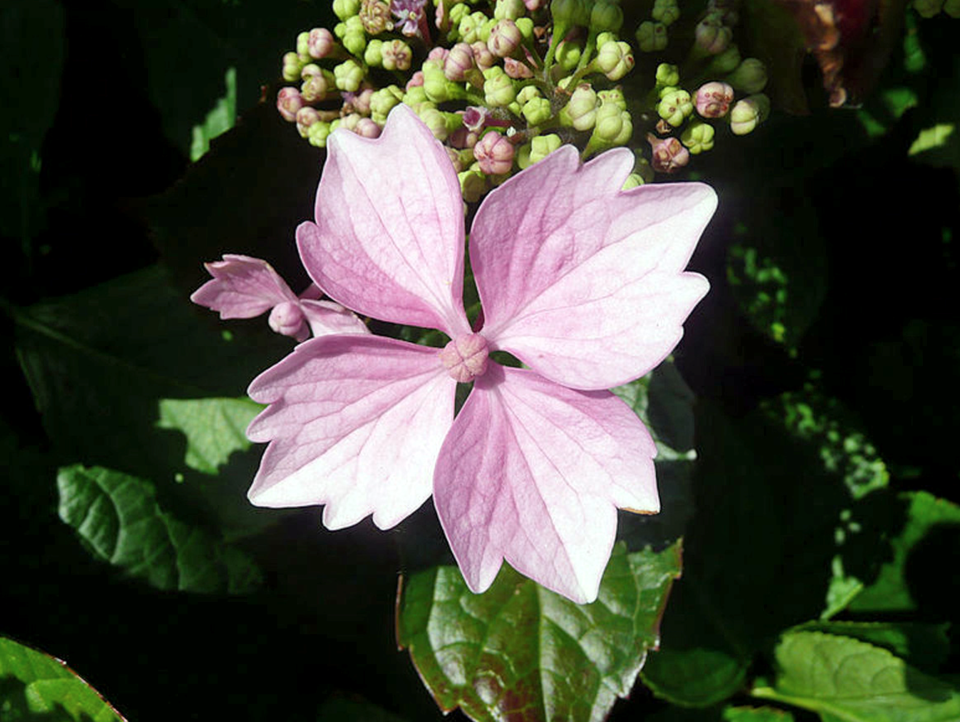Q: “When I pruned hydrangeas I stuck several stalks with healthy buds into pots. The four lace ones grew enormous this summer, but not a bloom on one. The one mophead grew very modestly but produced a huge white bloom. Can you give me a tip on being more successful?”
Beryl Wilson, Vancouver
The fact the lacecap hydrangeas grew very large indicates they were concentrating on vegetative growth. I wonder if you put them in very rich soil or laced their soil with high-nitrogen fertilizer.
This fertilizer stimulates leaf and stem growth but not flowers. In fact this fertilizer can reduce bloom even in shrubs that have bloomed quite well in the past. Nitrogen is the first number listed on soil enhancers.
Light may be another issue. Hydrangeas like very bright light but not direct sun. Also some hydrangeas tend to hold back flowers until they are closer to their maximum height.
If the soil you gave yours is very rich, perhaps you could repot them in less fertile soil but add a little bonemeal.
Q: “Is it still alright to eat my chard that has turned dark red. These leaves were green this summer. Will it be bitter? Why did it turn red? Should I just pull them all for this year or just cut the tops off leaving the roots?”
Koko, Coquitlam
The heat and perhaps drought associated with heat has turned your chard red. Also it’s quite old at this point and chard doesn’t improve with age. Yes, it could be bitter, possibly too bitter to eat.
Even if you have to leave your chard unpicked in summer because you have so many other vegetables, it can be good to keep the older leaves picked anyway. This keeps young, sweet, tender leaves coming.
You could take a cautious nibble of your chard and see for yourself if it’s edible.
But it’s likely best to cut the tops right away. But leave the roots because there may be some good chard-growing weather between now and Christmas.
Q: “Last May, we put ground cover plants in our front yard instead of grass. They have done very well. We planted wooly thyme, white thyme, Veronica Whitley and Golden Birds Foot. We think it will turn out amazing, but it was quite costly.
Now winter is here much earlier than expected and the green leaves on the trees in our yard haven’t fallen yet. We expect the snow to melt over the next while which will allow us to remove the leaves.
What should we do with the leaves? Should we leave them on top of the ground cover plants as protection or could you offer us any other alternative?”
David and Paulette Smith,
Calgary
Yes, you should leave them on top of your ground cover plants. I’m sure your plants will spend some of the winter buried under insulating snow. But Calgary also gets Chinooks which remove snow and winds that re-distribute it.
If you get a major Chinook, you could get frost heaves which are very hard on plant roots when freezing returns. In case you get high winds you should hold in your leaves with prunings or wire.
Next spring, you could rake the leaves off your ground covers and dig them into a vegetable garden or mulch around shrubs.
Anne Marrison is happy to answer gardening questions. Send them to her via [email protected].



